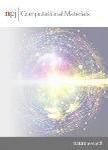Framework for atomic-level characterisation of quantum computer arrays by machine learning
作者机构:Center for Quantum Computation and Communication TechnologyUniversity of MelbourneParkvilleVIC 3010Australia School of PhysicsUniversity of MelbourneParkvilleVIC 3010Australia School of Computing and Information SystemsMelbourne School of EngineeringUniversity of MelbourneParkvilleVIC 3010Australia School of Mathematics and StatisticsUniversity of MelbourneParkvilleVIC 3010Australia
出 版 物:《npj Computational Materials》 (计算材料学(英文))
年 卷 期:2020年第6卷第1期
页 面:1513-1520页
核心收录:
学科分类:07[理学] 070201[理学-理论物理] 0702[理学-物理学]
基 金:This work was supported by the Australian Research Council(ARC)funded Center for Quantum Computation and Communication Technology(CE170100012) partially funded by the USA Army Research Office(W911NF-08-1-0527)
摘 要:Atomic-level qubits in silicon are attractive candidates for large-scale quantum computing;however,their quantum properties and controllability are sensitive to details such as the number of donor atoms comprising a qubit and their precise *** work combines machine learning techniques with million-atom simulations of scanning tunnelling microscopic(STM)images of dopants to formulate a theoretical framework capable of determining the number of dopants at a particular qubit location and their positions with exact lattice site precision.A convolutional neural network(CNN)was trained on 100,000 simulated STM images,acquiring a characterisation fidelity(number and absolute donor positions)of98% over a set of 17,600 test images including planar and blurring noise commensurate with experimental *** formalism is based on a systematic symmetry analysis and feature-detection processing of the STM images to optimise the computational *** technique is demonstrated for qubits formed by single and pairs of closely spaced donor atoms,with the potential to generalise it for larger donor *** method established here will enable a high-precision post-fabrication characterisation of dopant qubits in silicon,with high-throughput potentially alleviating the requirements on the level of resources required for quantum-based characterisation,which will otherwise be a challenge in the context of large qubit arrays for universal quantum computing.



